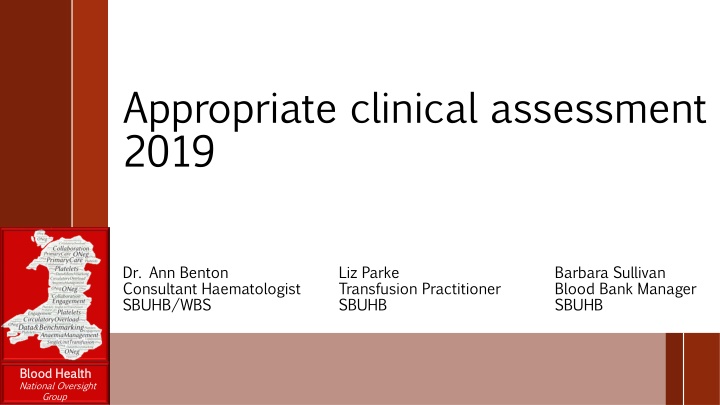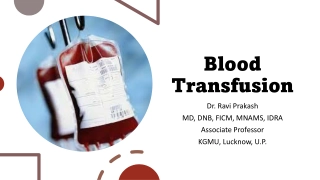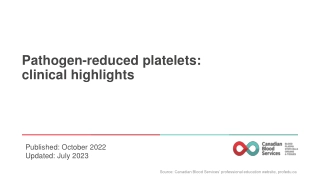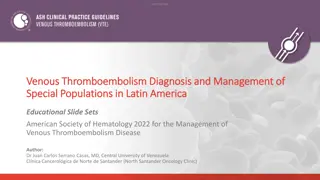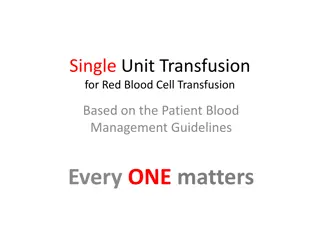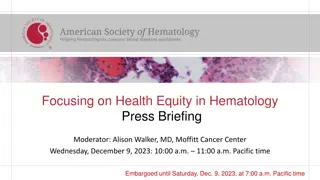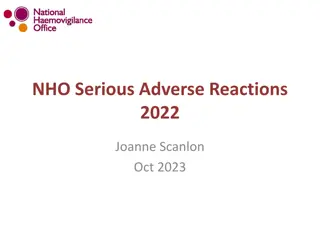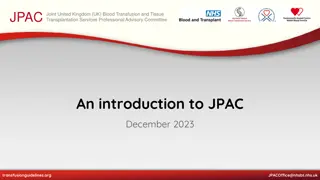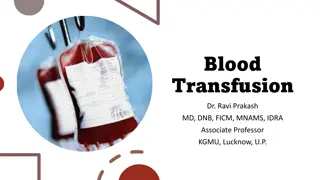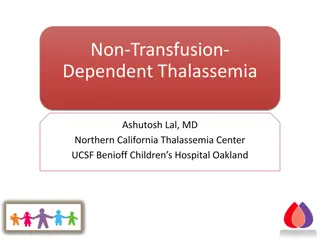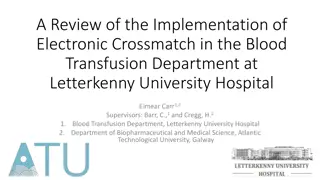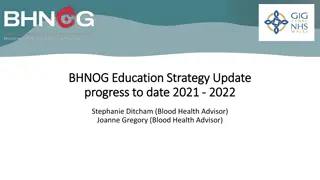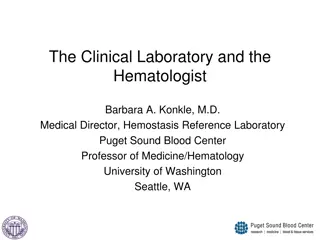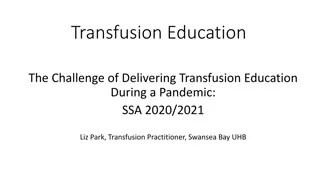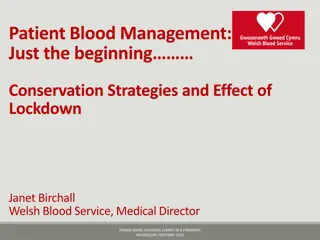Clinical Assessment in Hematology: Improving Transfusion Practices
This document discusses the importance of appropriate clinical assessment in hematology, focusing on transfusion-associated circulatory overload and single unit transfusions. It outlines baseline audits, data mining, and prospective audits to enhance practice and patient outcomes. The results highlight challenges and potential biases associated with observational audits.
Download Presentation

Please find below an Image/Link to download the presentation.
The content on the website is provided AS IS for your information and personal use only. It may not be sold, licensed, or shared on other websites without obtaining consent from the author.If you encounter any issues during the download, it is possible that the publisher has removed the file from their server.
You are allowed to download the files provided on this website for personal or commercial use, subject to the condition that they are used lawfully. All files are the property of their respective owners.
The content on the website is provided AS IS for your information and personal use only. It may not be sold, licensed, or shared on other websites without obtaining consent from the author.
E N D
Presentation Transcript
Appropriate clinical assessment 2019 Dr. Ann Benton Consultant Haematologist SBUHB/WBS Liz Parke Transfusion Practitioner SBUHB Barbara Sullivan Blood Bank Manager SBUHB Blood Health Blood Health National Oversight Group
Overview A fundamental requirement One of the 5 key work streams 2 areas for QI identified in SHOT recommendations and results of NCA of red cell transfusion Transfusion Associated Circulatory Overload (TACO) 7/21 deaths Single Unit Transfusions (SuTx) Work stream project plan The landscape Audit, Data mining The flaws The fixes The benefits Blood Blood Health Health National Oversight Group
The landscape 1 Baseline audit of clinical assessment Design and pilot baseline observational audit of practice (what is being done when and by whom) Analyse process and results, refine pilot protocol Assess potential interventions compare with NABT practitioners Apply intervention, re audit, assess impact on outcomes Upscale for national use Run national audit Run national programme of intervention (s) Assess impact of intervention (S) Blood Health Blood Health National Oversight Group
The landscape 2 Data mining for single unit transfusions Retrospective local interrogation of LIMS Current and historical data comparison Assess usefulness of information Refine criteria Upscale to national LIMS Blood Health Blood Health National Oversight Group Prospective data collection as part of observational audit Analyse both data sets Identify target areas and intervention Implement and assess outcome
Results Prospective audit pilot process Audit proforma easy to use and data relatively straightforward to collect provided can be conducted as observational process Blood Health Blood Health National Oversight Group Availability of auditor at appropriate time for observational process challenging, and less data points complete if retrospective Potential performance bias associated with observational/self audit
Results Prospective audit key points The flaws Poor levels of communication and use of information aids Better documentation in notes and use of transfusion record Predominantly 2 units transfused Reassess between units rare Weight rarely (if ever) assessed/recorded Limited evidence of appropriate clinical assessment in general Blood Health Blood Health National Oversight Group ? The fixes Pilot data indicates improved practice for assessment, communication, consent (all domains) for NABT practitioners cf all other medical groups ? Key elements required, to whom, when and how Data collection and detailed analysis ongoing
Results SuTx LIMS Data mining SHDAY SCHEM SBMT S12 MW Blood Health Blood Health National Oversight Group MJ MITUW MITUS MITUN % Single unit Req MHDU Total Requests MCITU MCHDU MB MA BPIU BE B2 0 20 40 60 80 100 120
Challenges data mining process The flaws Defining data set requested, transfused, total units, time frames All areas? Assume non acute location means non acute clinical event Varying LIMS systems and codes Blood Health Blood Health National Oversight Group ? Denominator data Numbers and no context re clinical outcomes
The Future Complete pilot data collection and analysis ? Themes/reasons relating to clinical assessment ? Practical intervention and delivery model (competence) Re audit Assess outcomes ? National approach education strategy Blood Health Blood Health National Oversight Group National data mining data set for SuTx and compare pre and post intervention results as surrogate marker of success
The Benefits Improved clinical assessment Reduce risk of transfusion associated death Appropriate use ? Reduce unnecessary donor exposure Improve communication Informed consent Individualised safe quality patient care Blood Health Blood Health National Oversight Group
